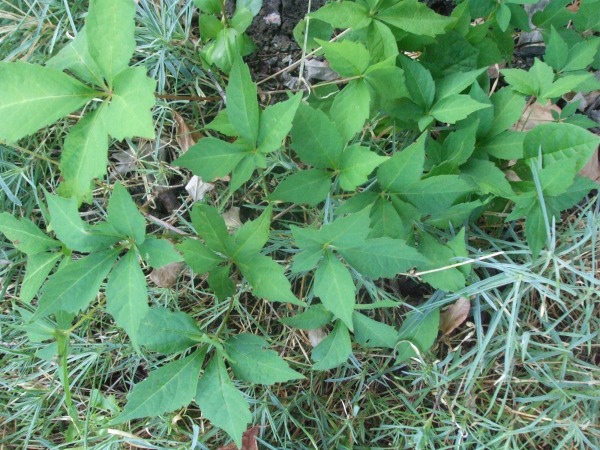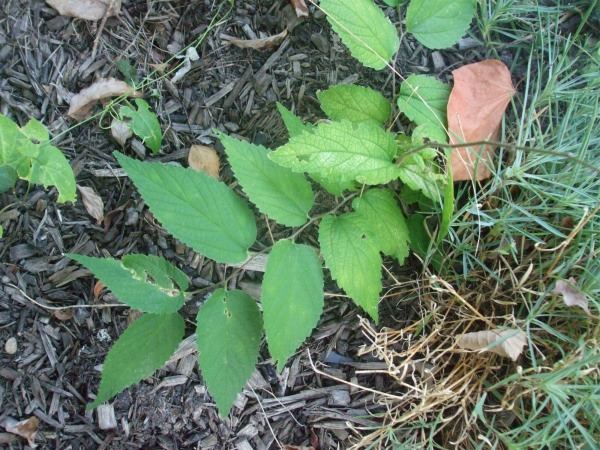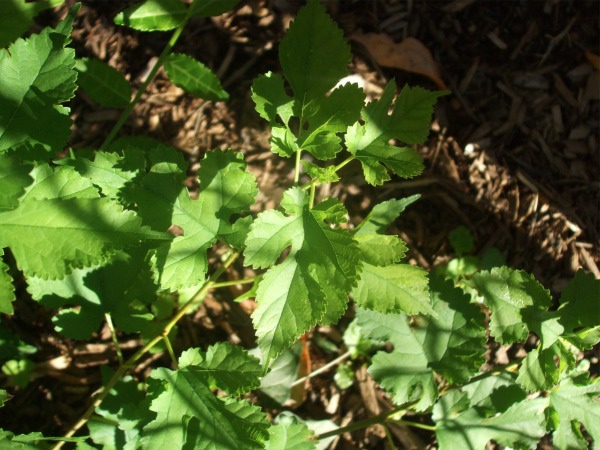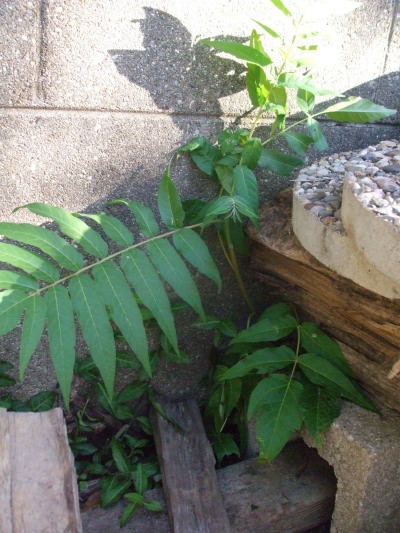
Redbud seedlings. (C) Jo Ellen Meyers Sharp
The adage that a weed is just a plant out of place certainly holds true in my yard, when plants show up where I don’t want them. Here are some common examples:
Eastern redbud
The Eastern redbud (Cercis canadensis) is a fast-growing, native, ornamental tree with pink flowers in spring and pale yellow, heart-shaped leaves in fall. A prolific seeder, seedlings show up everywhere and anywhere. They are hard to pull and dig out. Best time for the job is early spring when the soil is moist.

Virginia creeper. (C) Jo Ellen Meyers Sharp
Virginia creeper
I can’t tell you how many times I’ve slipped a plastic bag on my arm to pull Virginia creeper (Parthenocissus quinquefolia), thinking it was a young poison ivy plant. This native climbing and trailing vine starts out with three leaves and within a few feet, takes on the more familiar Virginia creeper, five-leaf form. The leaves turn a beautiful deep red in fall. It blooms in summer, followed by fruit, but I’ve never noticed either. This is good for camouflaging fences or climbing a trellis, but not creeping through the garden bed. Pull anytime and keep pulling where it’s not wanted.

Hackberry seedling. (C) Jo Ellen Meyers Sharp
Hackberry
Common hackberry (Celtis occidentalis) has rough leaves arranged alternately along the branch. Seedlings of this native plant are easy to spot because of their arched form. Cut back to the ground or dig out.

Mulberry. (C) Jo Ellen Meyers Sharp
Mulberry
White mulberry (Morus alba) seems to have a fast-growing stranglehold on my neighbor’s side of the fence, no matter how much I whack it back. Unlike the native red mulberry (Morus rubra), the Asian introduction can readily be found in urban areas. It is likely spread by birds that eat the fruit, which despite its white mulberry moniker, is red.

Tree of heaven. (C) Jo Ellen Meyers Sharp
Tree of heaven
When I was a kid, we called this a stink tree and today, it sometimes is called a ghetto palm. However, tree of heaven (Ailanthus altissima) seems to be its most common nickname. Tolerant of sun or shade, this fast-growing tree from China is very tough, a prolific seeder and hard to get rid of. Keeping it chopped back will eventually starve it out. If small, dig it out. If large, you’ll probably have to hire an arborist to take it down.